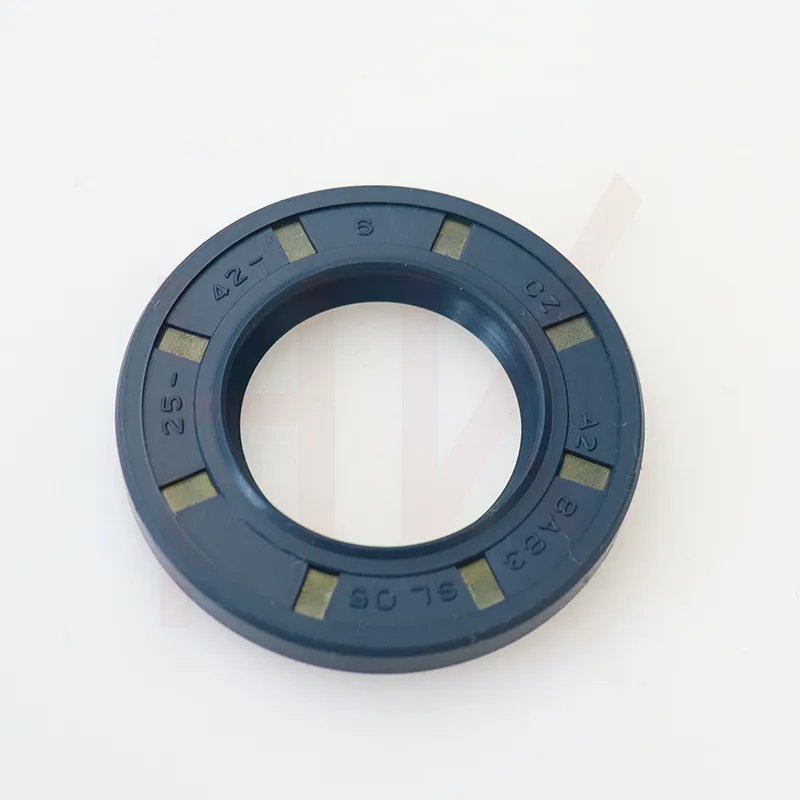ਨਵੰ. . 21, 2024 15:15 Back to list
dust wiper seal
Understanding Dust Wiper Seals Importance and Applications
Dust wiper seals are critical components in various mechanical systems, particularly those involving moving parts and outdoor applications. They serve as a protective barrier, preventing dust, dirt, and other contaminants from entering the critical areas of machinery and equipment. This article will delve into what dust wiper seals are, their importance, types, materials used, and their applications across different industries.
What Are Dust Wiper Seals?
Dust wiper seals, sometimes known as dust covers or scrapers, are designed to keep foreign particles from infiltrating the internal parts of machinery. They are typically positioned where moving parts meet static components, creating a line of defense against environmental elements. The primary function of these seals is to ensure longevity and reliability in the operation of equipment by minimizing wear and tear.
Importance of Dust Wiper Seals
The significance of dust wiper seals cannot be overstated. In any system where there is relative motion, such as hydraulic systems, pneumatic systems, and rotating machinery, the entry of dust and debris can lead to increased friction, overheating, and eventual failure. Here are some key reasons why dust wiper seals are essential
1. Protection Against Contamination The most obvious function of dust wiper seals is to prevent dirt and grime from entering the machinery. This contamination can significantly impair performance and lead to system failures.
2. Extended Equipment Lifespan By keeping contaminants at bay, dust wiper seals help prolong the life of machinery. Reduced wear on moving parts translates to fewer maintenance issues and lower replacement costs.
3. Improved Efficiency Clean machinery tends to operate more efficiently. Dust wiper seals help maintain the operating environment, ensuring that machines can perform at optimal levels.
4. Safety Enhancement In some applications, such as automotive and aerospace industries, machinery failure due to contamination can pose safety risks. Dust wiper seals contribute to safer operational environments.
Types of Dust Wiper Seals
Dust wiper seals come in various designs, tailored to meet the specific requirements of different applications. Some common types include
- U-shaped Seals These seals feature a U-shaped design that allows them to fit snugly against machinery. They are often used in hydraulic cylinders and mechanical linkages.
- Lip Seals Lip seals have a flexible lip that makes contact with the moving part. This design effectively wipes away dust, ensuring that only clean surfaces are in contact.
dust wiper seal

- Bellow Seals Bellow seals are used in applications where there is significant movement or flexing. They provide excellent protection while accommodating motion.
Materials Used in Dust Wiper Seals
The effectiveness of dust wiper seals largely depends on the materials used in their construction. Some common materials include
- rubber-based Compounds Rubber is widely used due to its flexibility, resilience, and ability to withstand various environmental conditions. Different grades of rubber can be tailored for specific temperature ranges and chemical exposures.
- Polyurethane This material is favored for its durability and resistance to wear. It can withstand harsh environments and is often used in heavy machinery.
- Metal In some applications, metal is used alongside rubber seals to enhance durability and offer additional protection against impact and wear.
Applications of Dust Wiper Seals
Dust wiper seals are utilized across many industries, including
- Construction Heavy machinery like excavators and bulldozers rely on dust wiper seals to keep their hydraulic systems free from debris.
- Automotive Cars and trucks utilize dust wiper seals in various components, including suspension systems and engine parts, to ensure smooth operation and longevity.
- Aerospace In aviation, dust wiper seals are critical for maintaining the integrity of hydraulic systems and ensuring safe operations.
- Manufacturing In manufacturing settings, dust wiper seals protect equipment such as conveyors and CNC machines from harmful debris.
Conclusion
In summary, dust wiper seals play a vital role in protecting machinery from contamination, thereby extending the lifespan of equipment and improving efficiency. With various types of seals available and multiple materials to choose from, it is important for industries to select the appropriate dust wiper seals for their specific applications. By ensuring the integrity of their machinery, companies can enhance performance, reduce maintenance costs, and contribute to safer operational practices. Understanding the significance of dust wiper seals is essential for anyone involved in the design, operation, or maintenance of machinery and equipment.
-
TCN Oil Seal Metal Ring Reinforcement for Heavy Machinery
NewsJul.25,2025
-
Rotary Lip Seal Spring-Loaded Design for High-Speed Applications
NewsJul.25,2025
-
Hydraulic Cylinder Seals Polyurethane Material for High-Impact Jobs
NewsJul.25,2025
-
High Pressure Oil Seal Polyurethane Coating Wear Resistance
NewsJul.25,2025
-
Dust Proof Seal Double Lip Design for Construction Equipment
NewsJul.25,2025
-
Hub Seal Polyurethane Wear Resistance in Agricultural Vehicles
NewsJul.25,2025
-
The Trans-formative Journey of Wheel Hub Oil Seals
NewsJun.06,2025
Products categories
















